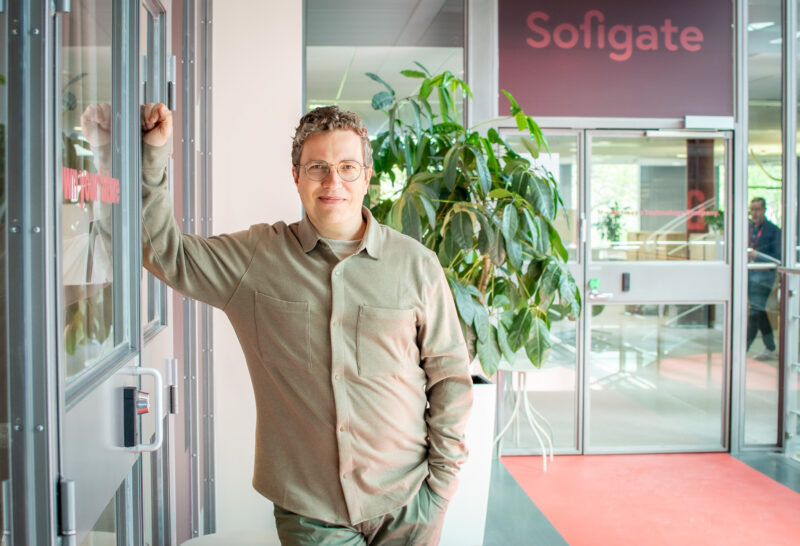CFO, this is how you become a productivity leap CEO
Finnish companies invest in technology, but often do not get a return on their investment in the form of a real productivity leap. The best person to fix the problem is a modern CFO, argue Sofigate’s Lassi Kurkijärvi and Sanna Suomela.
Sofigate recently conducted a survey of large Finnish companies’ investments in business technology and the gains they have made from these investments. The survey showed that Finnish companies are keen to invest in technology and that the vast majority of development projects are successful, at least in appearance.
Unfortunately, the study also revealed that, despite the investment and the apparent success of the projects, labour productivity has not improved in the way companies expected. Only just over a fifth of survey respondents felt that development projects had achieved significant leaps in productivity.
Fortunately, this means that there is a productivity leap lurking in large Finnish companies. It just needs to be brought to the fore by managing business development projects more boldly and by pursuing genuine business renewal, not just small operational improvements.
So whose responsibility is it to unearth the productivity leap? The person who holds the purse strings of investment – the company’s CFO. Although the CFO does not run the operational business of the company, it is no exaggeration to say that they should be the CEO of the company’s productivity leap.
The four roles of the CFO in transformation
Let’s take a fictitious Enterprise Ltd and its progressive CFO, Tina. Through a survey, we found four challenging starting points for the project – and four ways in which Tina can take the reins and lead the company to a whole new level of productivity.
1. Raise the bar
In a significant number of projects, the productivity leap is not achieved because the targets are simply too modest. As CFO, it is Tina’s job to challenge the project team to set the bar high enough for the benefits of the investment and to allocate sufficient resources to the project.
Yes, it costs more, but as a modern CFO, Tina knows that a genuine business transformation will pay for itself much faster than small efficiency improvements here and there. So in the long run, the efficiency of Enterprise Ltd will improve, even if the price tag of the project in question is slightly higher.
2. Get the right people on the same team
creating value for the business if it is the sole responsibility of the IT department. Fortunately, CFO Tina realises that technology and business need to play on the same team, understanding each other’s approaches. She acts as a coach, guiding the selection of the right talent for key roles in the project, regardless of the silos in the company’s organisational chart.
Real change requires a horizontal, cross-business and cross-technology thinking on how to revamp the entire value creation pipeline. Only then can a technology project truly add value to the business.
3. Genuinely involve key people
Most technology projects seek to involve key people from different parts of the organisation. However, the genuine involvement of business management in particular is often lacking. It is not enough for business management to commit to the reform just from their seats in the steering group.
As a modern CFO, Tina’s role is to gather the relevant business leaders in the core teams and make sure they roll up their sleeves and take responsibility for designing change to meet the business needs of the company. Where appropriate, Tina will also ensure that business leaders are supported in understanding the opportunities of technology.
4. Develop your organisation’s skills
The opportunities brought by technology are too important to be left to IT people alone, and business management’s own thinking is too valuable to be outsourced to consultants. Therefore, continuous planning is needed to develop the organisation’s capabilities and in-house expertise.
This is now easier than ever, as new human-centred design methods ensure that no specialist technological skills are required to participate in the design process. Tina, the CFO, who closely monitors the value return on technology investments, can now ensure that thinking, knowledge, and business capability development remain firmly in the hands of the company and organically increase the company’s own capacity for change.
How can I become a modern CFO?
Tina is a fictional character, but anyone in a similar role can learn from her.
And they should, because the CFO is responsible for the financial planning, risk management, future profitability, and competitiveness of the company. Managing a productivity leap is part of taking care of all these tasks. For the modern CFO, it is also a way of multiplying his or her value to the organisation.
At the same time, the modern CFO also takes on a role in developing the sustainability of the company’s business. Increasing productivity does not inherently mean growth for growth’s sake, but rather a more efficient use of resources and an end to waste – things that every CFO values.
The results of Sofigate’s latest survey have now been published.
Download the report here:
Authors
Sanna Suomela leads Sofigate’s Transformations business with the goal of changing the world together with customers one business transformation at a time.
Lassi Kurkijärvi has been building digital businesses for a quarter of a century. Today, he helps Finnish companies with digital transformation in his role as Sofigate’s Executive CTO. His passion is humanity in all its forms: change is ignited or extinguished by whether people are inspired and engaged by it.


